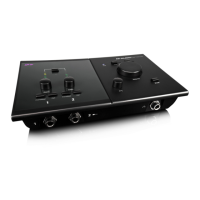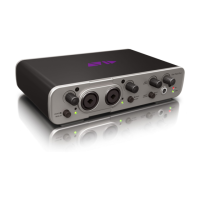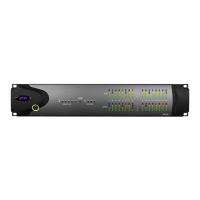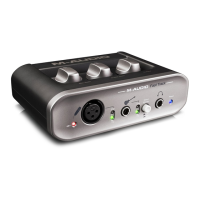Chapter 4: Making Studio Connections 19
MIDI Connections
The two MIDI ports on Mbox are available to
any MIDI application on your computer, as long
as the Mbox hardware drivers are installed.
If you need additional MIDI ports you can add a
compatible MIDI interface. USB MIDI interfaces
work effectively with Windows or Mac. Serial
MIDI interfaces are supported on Windows sys-
tems only.
To connect your MIDI device to Mbox:
1 Connect a standard 5-pin MIDI cable from the
MIDI Out port of your device to the MIDI In
port on the back of Mbox.
2 Connect another MIDI cable from the
MIDI In port of your device to the MIDI Out
port on the back of Mbox.
Monitoring MIDI Instruments with
Mbox
If you have a MIDI instrument that has analog
outputs, you can connect it to Mbox to monitor
its output.
To connect your MIDI instrument for monitoring:
Connect the MIDI instrument’s audio outputs
to the Line (TRS) inputs on your Mbox.
Only USB MIDI interfaces are compatible
with Pro Tools systems for Mac OS X. Mo-
dem-to-serial port adapters and serial MIDI
devices are not supported.
MIDI connections to Mbox
On Mac OS X, use the Audio Midi Setup
(AMS) utility to customize the names of your
MIDI devices.

